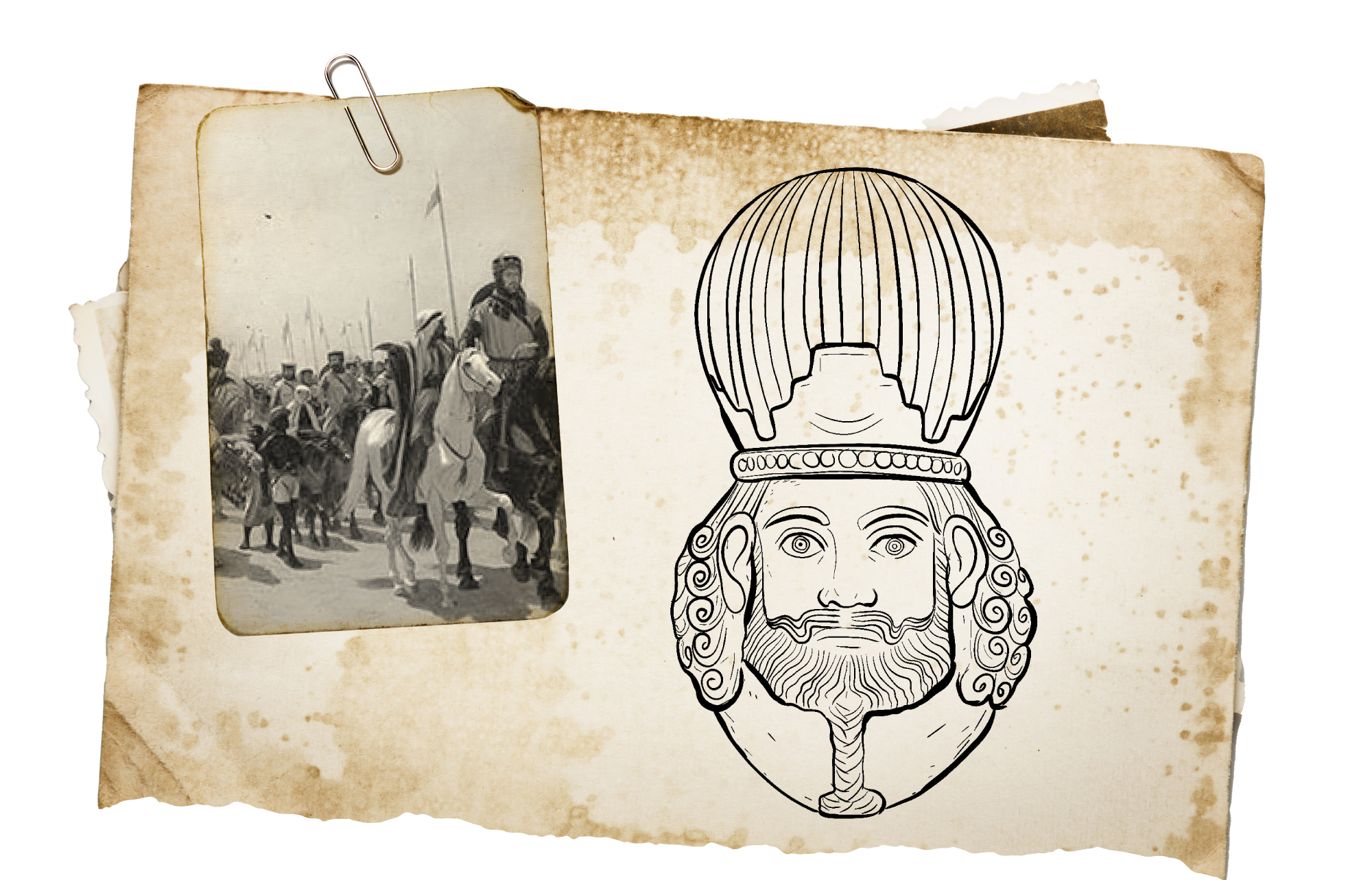
The first Persian aggression in history against the Arabs
Dhū'l-Aktāf invaded eastern Arabia, and the narrators exaggerated his incursion into Al-Yamamah
The first Persian invasion on the Arabian Peninsula in old history was launched by the Persian King Shapur II, who invaded the Arabian Peninsula and spread destruction in light of the tense relationship between him and the east of the island that lasted for decades as confirmed by historical sources, after the Arab tribes reached the borders of the Persian Kingdom in their search for living resources away from their parched island which lacks water and food. This provoked the Persians to a great extent, and prompted Shapur to take revenge on the Arabs of the island, and to attack them in their own homes.
Shapur was no ordinary king of ancient Persia, as he had a condescending and aggressive personality considering that he was crowned as a king in his mother’s womb after his father died, where the wise men of Zoroastrianism came with his father’s crown and placed it on his mother’s womb, and the Persian rulers continued to rule in his name and his mother’s guardianship until he reached the age of sixteen to directly take over the affairs of his state, and thus ruled his country for 70 years during the period (309-379 AD).
Because Shapur was treated as a king before his birth and adulthood, he had a very arrogant and fierce personality, and due to the rumors that spread among the surrounding nations regarding the circumstances of his kingdom and that its king was a child, many of them coveted to extend their influence, and the Roman state was the greediest of those, as well as some Arab tribes that had reached the borders of his Persian kingdom in search of pasture and water during the reign of Shapur. Thus, the Persian kingdom fought several battles with those greedy nations.
Because the closest Arab land to the Persian kingdom was Iraq, which was controlled by a group of Arab tribes led by the Iyad tribe from that early period in the history of the Sassanid state, bad blood always existed between the Arab tribes in Iraq and the southwestern regions of Persia.
Against this reality that Shapur found himself in, he wanted to secure his borders from the Romans first, so he launched his campaigns against the Romans, and spread to the fortified Amd Fortress (currently Diyar Bakir) and gained control of it with difficulty in (360 AD), he then fought fierce battles on the Tigris coast with Julian, the Emperor of Rome, who crossed the Euphrates and seized the cities of Mesopotamia, including the city of Fayrouz Shapur. Later, the Romans were forced to accept a peace treaty with Shapur, and the Roman emperor signed a treaty which states that Persia shall recover the nations it lost, and the two parties agreed to stop wars and impose a peace between them.
In view of the Roman-Persian peace, there was no enemy left for Shapur to fight the war that he began against, except the Arabs who were caught up in the middle of the war between him and the Romans, and who were a constant concern for Shapur, because they were the rulers of Iraq and its people. That is why the historian Al-Masoudi says in his book “Muruj Al-Dhahab”: “When Shapur grew up, he recovered large parts of his kingdom, then headed towards Iraq, and spread destruction. Shapur was able to secure the southern regions of the empire, and only a group of people managed to escape to the Roman lands. In Karbala, Shapur dug an old trench passing through Kufa to repel his enemies’ attacks on his kingdom, and from here we know that the main purpose of the Shapur trench is to defend. This method influenced the great companion Salman al-Farsi who he then went to Medina and explained it to Prophet Mohammad, may Allah’s prayers and peace be upon him, in the Battle of the Trench, and then it was applied, and it is said that it is an ancient Persian military method.
Shapur II decided to declare war against the Arabs as soon as his hostility reached its limit, and the people of Bahrain and Iraq had the first share of extermination and abuse. The researcher Shakir Majeed Al-Shatri says in his book “History of the Persian Empire”: “Shapur started his first war against the Arabs in the Black Land or Iraq, so he killed them and tortured them one by one, and he deliberately inflicted harm upon them and exiled them from their own country, especially the Iyad tribe. In this hateful situation, Shapur managed to butcher the Arabs and killed a large number of Iyad’s and Tamim’s people. His armies launched extermination campaigns, some of them fled to the Romans and some of them to Bahrain in the east of the Arabian Peninsula, so he hunted them down to Bahrain and marched to Al-Ahsa and Qatif, then returned to Diyar Bakr and exterminated them as well, then to Al-Yamamah deep inside the Arabian Peninsula. Whoever opposes him, he pierces their shoulders, and that is why he was called Dhū’l-Aktāf (he who pierces shoulders), and it is said that he used to crucify them by their shoulders on the mountains.”
As the Iraqi Jawad Ali says in his book “The Detailed History of the Arabs Before Islam”: “Historians mention that Shapur was nicknamed Dhū’l-Aktāf because he pierced the shoulders of the Arabs. Jawad did not exclude that claim, as such painful torture methods were well known back in those days.
After Shapur finished his first campaign on eastern Arabia, he spread west towards Al-Yamamah and then Medina, where he invaded the deserts and cities. Shapur was not satisfied with just murdering and threatening people, but also forcibly exiled some Arab tribes by force, apparently to break their alliances and disperse their power so that it will not surpass the Persians again. He exiled Taghlib to Bahrain and Al-Khatt, and Abdul Qais and Tamim to Hajar, and Bakr bin Wael to Kerman, and Bani Handala to a place near Ahvas. In order to prevent the Arabs from initiating raids in his country, Shapur II ordered the construction of a wall near the city of Al-Hira, which became known to the Arabs as the “Arab Wall.” All of this paved the way for an Arab-Persian war that came before Islam, known as the Battle of Dhi Qar, which ended with the defeat of the Sassanid army and the victory of the Arabs, and followed by a few years the great battle of Al-Qadisiyah, which ended the rule of the Persians completely and avenged their conquest of the Arabian Peninsula.
The Arabs were a concern for the Persians, and the campaign of Shapur II on the Arabian Peninsula paved the way for the major battle in Dhi Qar.

Researcher Munira Muhammad Antar summarizes in her book “Shapur Campaign on Eastern Arabia”, what can be described as the closest analysis to the reality of the events in that period, of which sources are scarce, as she basically based it on a war over the trade roads, she says: “It is possible to say that the history of this campaign raised more questions than conclusions regarding the history of the Arabian Peninsula in that period (3rd to 5th centuries), where we found many complications that confused the events, a conflict over trade roads, whether land or sea, and this conflict was accompanied by a religious conflict, where the Romans imposed religion on every incident they coveted in the Arabian Peninsula, and the conflict in Armenia between the Persian and Roman empires in the name of religion, as well as the campaign of the Arab king Imru’ al-Qays, who gave up his subordination to the Persians and sided with the Romans.”
All of these were one of the indirect reasons for that campaign, in which the Persians tried to establish a presence in the east of the Arabian Peninsula to resist the expansion of the Romans in the middle of the Arabian Peninsula, which the historical sources, whether classical or Arab, agree on the occurrence of a Persian campaign on the east of the Arabian Peninsula during the reign of the Persian king Shapur II, despite the extreme exaggeration in the Arab sources, which mentioned incidents that are inconceivable.
The campaign of Shapur II on the Arabian Peninsula was part of a larger conflict between the Persians and the Romans. The campaign was not a separate incident, but it was part of a war that continued throughout the reign of Shapur after he broke the peace treaty that had been concluded with the Romans and lasted for forty years. As we learned from the sources, it ended with the Persian recovering their lands In Armenia, where Christianity spread, and close relationships were established between it and the Romans in northern Iraq. It seems that Shapur’s seizure of the western Euphrates and the extension of his influence in northern Iraq almost coincided with his seizure of eastern Arabia and the advance of the Persian armies to the Roman borders in the center of the Arabian Peninsula. This prompted Constantius to initiate his diplomatic mission to confront the Persians in southwestern Arabia.
By following the historical sources on the campaign of Shapur, Dhū’l-Aktāf, on the Arabian Peninsula, there appears to be many contradictions and discrepancy regarding its details, as most of what was mentioned about this campaign was exaggerated, especially with regard to the incursion of the Shapur campaign into the center of the Arabian Peninsula. It is unreasonable for Shapur to cross the east of the island he reached on the way to his campaign, especially since the westward incursion to Al-Yamamah and its surroundings was considered a major risk at the time of Shapur, as the Arabs are difficult to reach in their homes, especially since the experience of the Roman campaign on the south of the Arabian Peninsula from the north proves this theory that the incursion of forces into the center of the island would be fatal to the armies, especially since the Arabs were well aware of how to maneuver against the enemy on their land and between their wells that no one else knows about.
In conclusion, Shapur most likely did not cross the eastern Arabian Peninsula, as it was the farthest place he reached. The narrators and chroniclers greatly exaggerated in their history records, which makes it difficult to believe and prove such claims.


- Abu Al-Hasan Al-Masoudi, Muruj Al-Dhahab Wa Ma’aden Al-Jawhar (Beirut: Al-Maqtaba Al-Asriyya, 2005).
- Jawad Ali, The Detailed History of the Arabs Before Islam, 4th Edition (Beirut: Dar Al-Saqi, 2001).
- Shakir Al-Shatti, The History of the Ancient Persian Empire and the Rule Stages in Iraq B.C. and A.C. (Baghdad: Al-Amaya Library, 2015).
- Munira Al-Hamshari, “Shapur Campaign on Eastern Arabia: A Look Through Classical and Arabic Sources”, Journal of Middle East Research, Ain Shams University, p. 30 (2012).
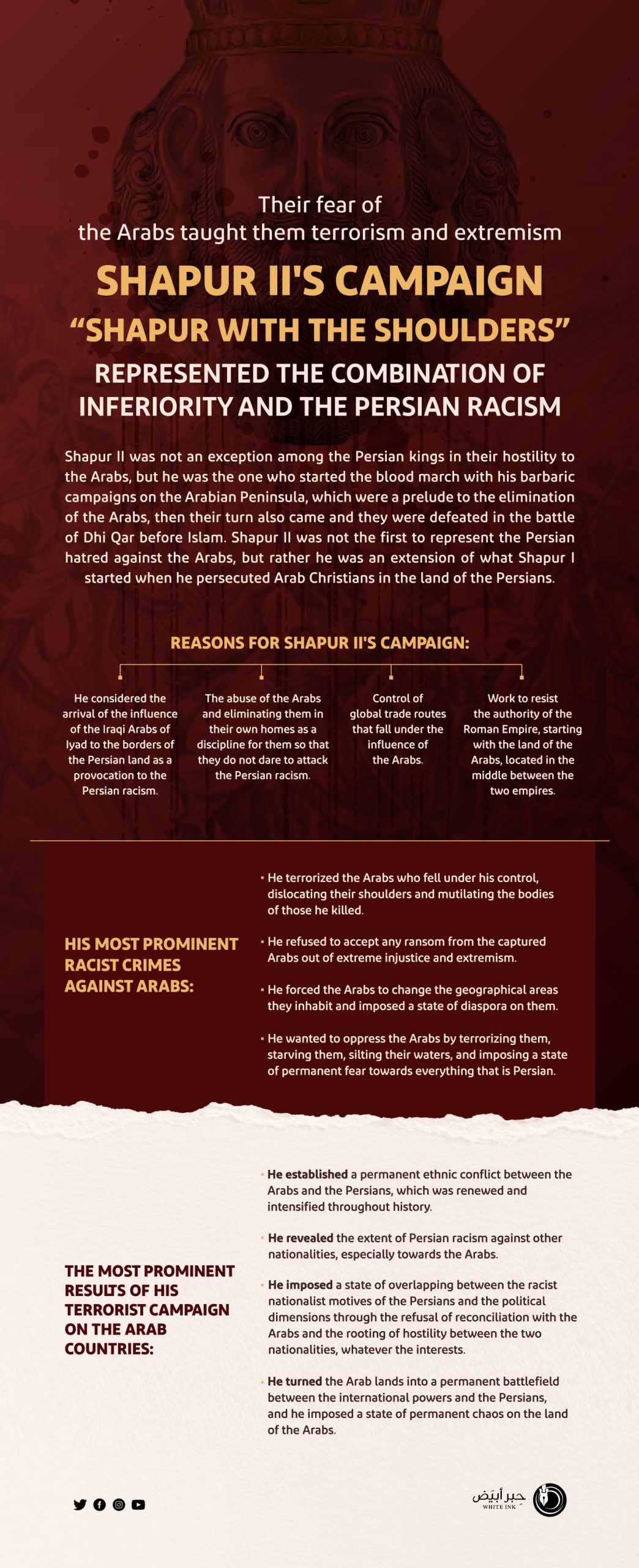
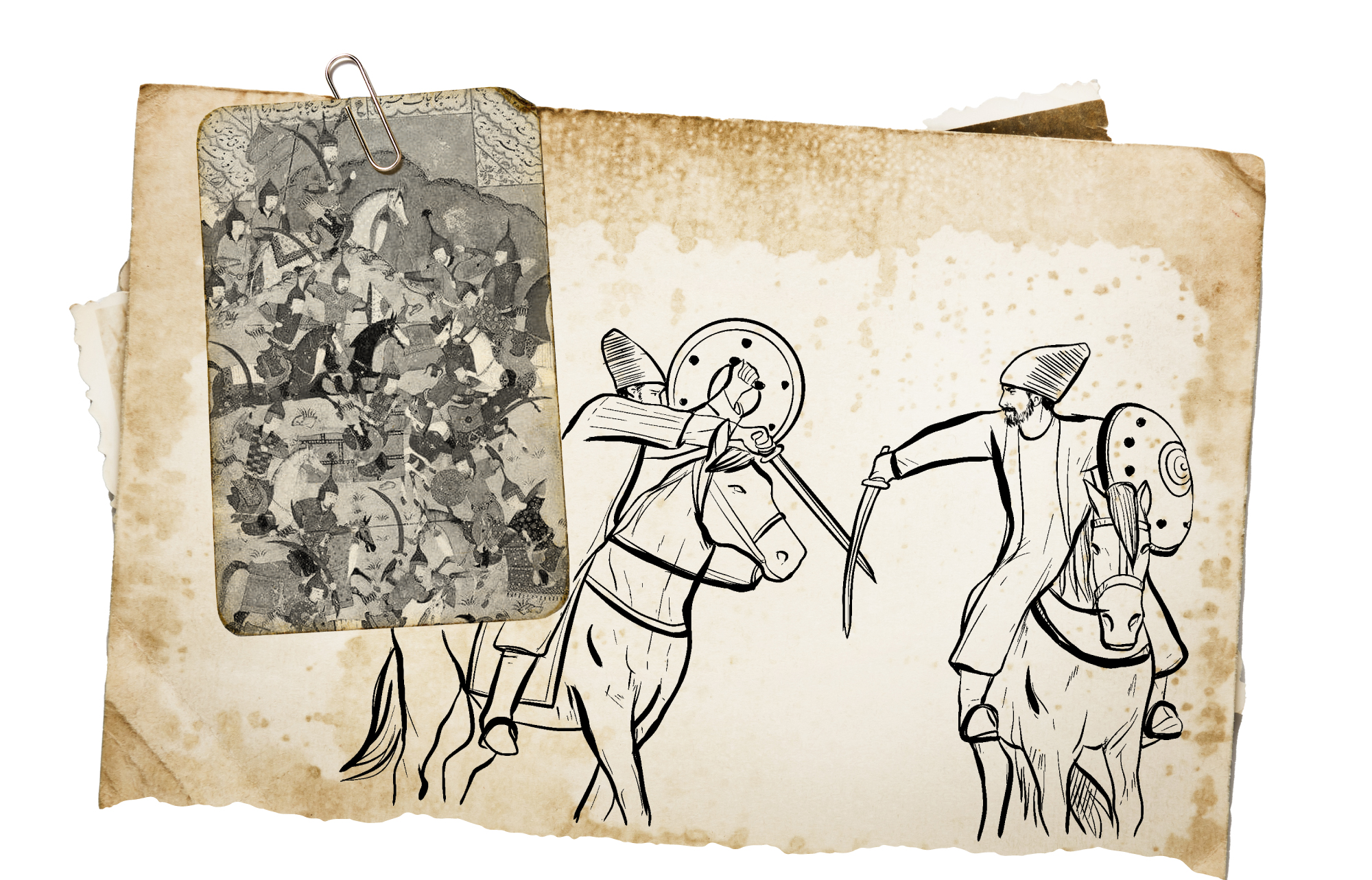
Persian hatred and racism have been ingrained since early times
Shapur's campaign changed the geography of the Arab population in Iraq and the Levant
The enmity between Arabs and Persians was not new, but rather had an ancient history. After the Sassanid dynasty replaced the Parthians in (225 AD), the Sassanids followed the same approach of domination and aggression on the western borders of the empire. The Sassanids established sea and river ports to expand their political, commercial and religious influence in the region.
As for their king, Shapur II (310-379 AD), the Greek historian Ammianus Marcellinus described him as a “barbaric Persian king”, especially after he dealt with the Arab tribes in a brutal way of killing and attacked them in eastern Arabia. This was as a result of the expansion of Iyad tribe from Iraq to southern Iran, specifically Ahvaz region overlooking the Arabian Gulf. At that time, the Arab tribes were in control and powerful and began to threaten the Sassanid domination in Persia itself, and this was proven by the classical sources, which confirmed that the Arabs were the pioneers of maritime trade activity and that this negatively affected the Sassanid state and its economy.
Shapur II surprised Iyad tribe in Iraq with a sudden attack, and only those who fled to the land of the Romans survived. This attack had harbingers that the Arabs of Iyad did not notice, as they received a warning from one of the Arab prisoners who were captured by the Persians called “Luqait”, who sent them a poem in which he said:
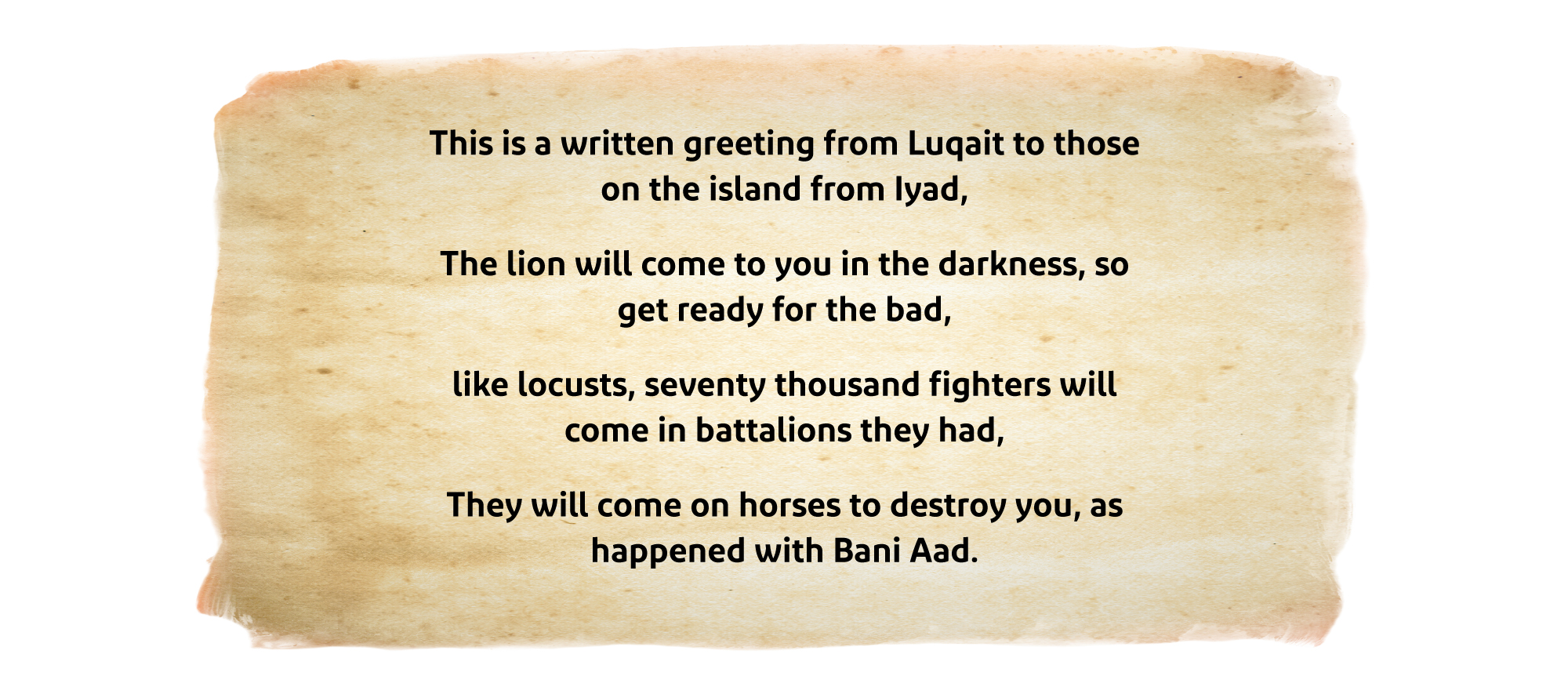
Shapur II was not satisfied with his attack on Iyad, but decided to attack them in the east of the Arabian Peninsula, where it is indicated that he attacked and killed them in Hajr, which was inhabited by Tamim, Bakr bin Wael and Abd Al-Qais tribes. Some narrations have exaggerated that he penetrated west into the Arabian Peninsula until he reached Al-Yamamah and caused a massacre. However, this contradicts the situation of the Arabian Peninsula at that time. It is illogical that the forces of the ancient world would dare to invade the center of the island, which was like a cemetery for invaders.
One of the well-known things about Shapur II’s campaign on eastern Arabia is that he adopted a malicious military plan by backfilling wells to create a conflict between the Arabs and make it difficult for them to live. After that, he returned to the areas of Bakr and Taghlib between the Kingdom of Persia and the Empire of the Romans in the Levant, so he did to them what he did to others. He caused a change in the geography of the population of the areas he attacked. He settled those who were from Bani Taghlib from Bahrain in “Dareen”. Those who were from Abd Al-Qais and the sects of Bani Tamim were settled in “Hajr”. Those who were from Bakr bin Wael were settled in “Kerman” and they were the ones called “Bakr bin Aban”. Those who were from Bani Handala were settled in “Rumaila” from the land of Ahvaz.
Al-Tabari describes the military campaigns of Shapur II as being wide and encompassing distant lands, beginning with those who descended on the land of Persia from the Arabs who camped on Bushire, the coasts of Ardashir, the coasts of Persia, and then the coasts opposite Iran from the Arab countries. This confirms that the campaign included a demographic change for the Arab tribes by force, tyranny and absolute brutality.
Whether those brutal campaigns were against the Arab tribes with the aim of subjugating them or returning some of them to the influence and sovereignty of the Sassanids from a political or religious point of view, the economic aspect was strongly present because the Arabian Peninsula was characterized by the supervision of the sea and land trade routes as a crossroads of trade routes in the ancient world. The Arab tribes had fallen victim to these repressive policies by Shapur II, who was nicknamed by (Shapur with the Shoulders) due to the brutality of his dealings with the opposition Arab tribal leaders because he was dislodging their shoulders in an inhumane manner. It was said that he was piercing the shoulders of prisoners and tying them together.
Shapur II not only pursued the neighboring Arabs, but also killed them and mutilated their bodies.



- Muhammad al-Tabari, History of the Prophets and Kings, investigated by: Muhammad Abu Fadl Ibrahim (Cairo: Dar Al-Maaref, 1968).
- Jawad Ali, The Detailed History of the Arabs Before Islam, 2nd Edition (Baghdad: University of Baghdad, 1993).
- Abd Aoun Al-Roudan, Encyclopedia of Arab History, (Amman: Al-Ahlia, 2004).
- Muhammad Bayoumi Mahran, Studies in the ancient Arab history, (Alexandria: Dar Al-Maarifa Al-Jami’iyya, 2000).
- Munira Al-Hamshari, Shapur’s Campaign to Eastern Arabia: A Vision Through Classical and Arabic Sources, Journal of Middle East Research, Ain Shams University, Issue. 30 (2012).
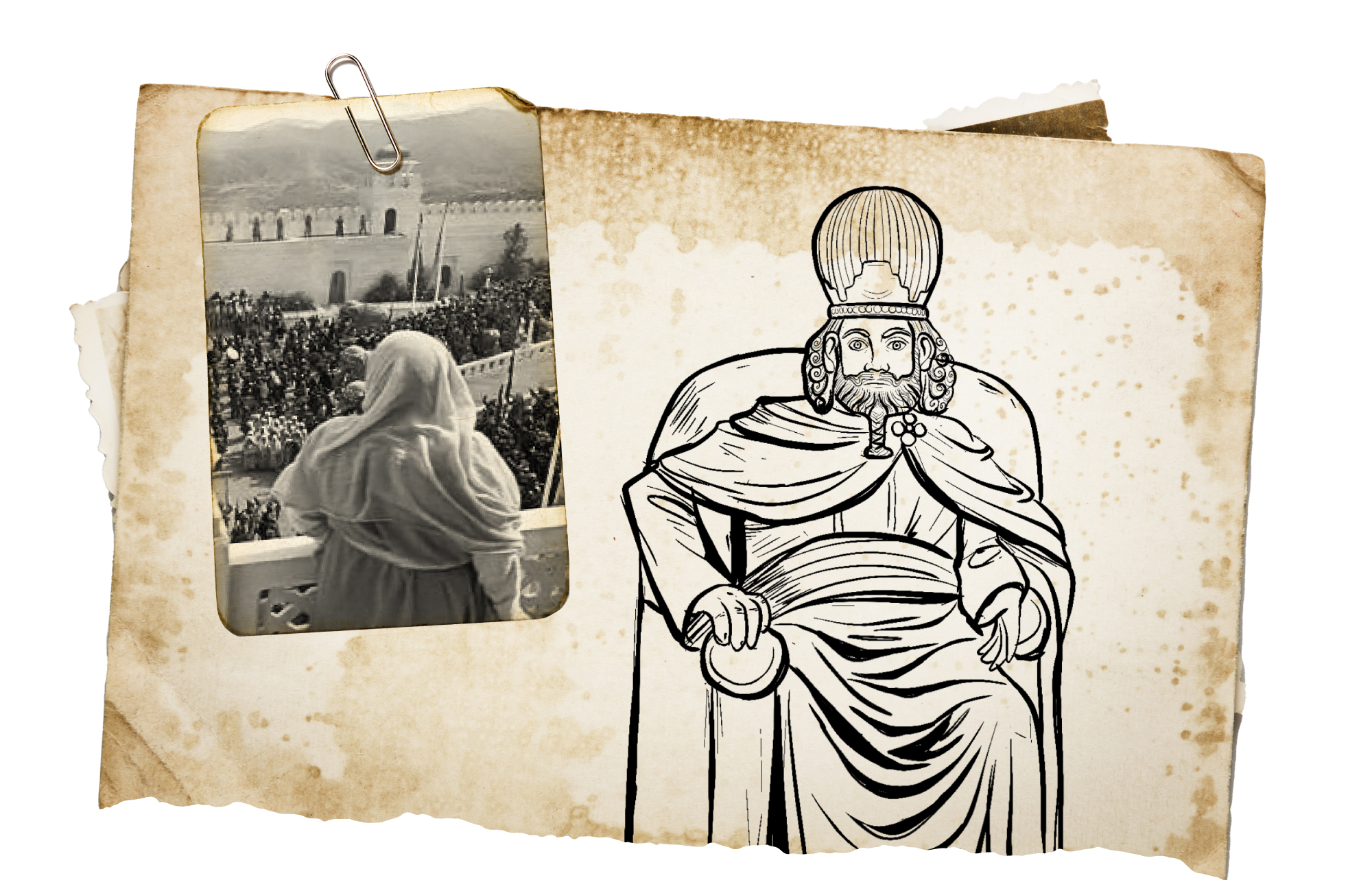
It started with the persecution of the Arab Christians
Shapur's teachings are the most important racial priorities of the sages of Qom
The historical enmity of the Persians towards the Arabs has an ancient and deep-rooted history. It was started by Shapur II, who represented the Persian anger, who did not imagine that the Arabs of the island would extend their influence in the land of the Persians one day. Therefore, Shapur’s barbaric campaign was the beginning of the representation of the Persian hatred towards the Arabs. That campaign turned the hostility into a permanent and continuous struggle throughout history to the present day.
Since their first conflict with the Arabs, the Persians practiced terrorism and then extremism, as extremism is an advanced stage of terrorism by carrying out physical actions that are a natural expression of an abnormal thinking pattern nourished by society, authority, or self-indoctrination.
From this point of view, the ethnic mobilization accumulated by the ancient Persian religions has been added to the desire of the Persians to expel the Arabs from the south of their land and then subjugate the regions of the Arabian Gulf. This is what made them plan to occupy the opposite side of the Gulf as a prelude to achieving security and stability for the Sassanid state, especially in light of the difficulty of exploiting the coast opposite the Arabs.
History reveals the mentality of the Persians and the reasons for their hatred towards everyone who is Arab.

In connection with the point of the research, it can be said that Shapur II adopted an ethnic and colonial policy that began to expand in the four directions, especially towards southern Persia and then to the Arabian Peninsula, for which he prepared a military campaign at the beginning of his rule. It seems that the first goal that Shapur set as a priority while he was still 16 years old was the elimination of the Arabs and the conquest of their lands.
Therefore, Shapur chose a thousand of his soldiers and addressed them in a vengeful tone, ordering them to kill all the Arabs they would meet. This is what actually happened, not to mention the captivity in a way that violates instinct and humanity, when he refused to accept any ransom from the Arab prisoners of eastern Arabia.
Shapur continued to kill Arabs, mutilate their bodies, and cut their throats. This is what reflected the racist behavioral structure of the Persians, hateful to everything that is Arab, especially if we know that Shapur II pursued this bloody policy when he was in the prime of life. This fact confirms that Shapur was raised on the hatred of Arabs and the desire to eliminate them and plunder their lands.
In order to trace the origin of this racist hatred of Shapur towards the Arabs, it is necessary to explain the policy of Shapur I towards the Arabs, as he is considered the first to start the persecution of the Arab Christians in the state of Persia.
In this regard, Al-Tabari gives us a bleak view of the fourth century AD, saying: “He went to Hajr, where there were people from the Arabs of Tamim, Bakr bin Wael and Abd Al-Qais. He brutally killed them, and their blood flowed like rain. After that, he went to the lands of Abd Al-Qais and exterminated the people, except for those who fled. He went to Al-Yamamah and carried out a massacre there. He backfilled any well he was passing through and spoiled any water he could find”.
When trying to explain the behavioral structure of Shapur II, we are faced with a bloody figure imbued with an extremist ethno-religious ideology. He strived to transform Persia into a land restricted to Persians who were imbued with the doctrine of the sun and the teachings of Zoroastrianism. Therefore, Shapur II abused the Arab Christians and began with them, where he carried out a massacre against the Arab heads of the church, then moved to all Christians. As an expression of his deep hatred for them, he ordered not to bury the victims and keep them under the sun as food for birds, and swore by fire and sun that he would not stop killing Christians until they abandoned their religion and worshiped the sun.
By linking and comparing the ethnic approach to Iranian politics after Shapur II to the present day, we will understand the origin of the formation of the Persian ethnic doctrine, which is the key to understanding Iran’s hostile policy against all other ethnic groups. The historical material also states that the exploitation of religious knowledge in the service of the Persian political project is not a product of today, but rather a continuation of centuries of ethnic and behavioral accumulation.
For this reason, it was not surprising that the sages of Qom succeeded in manipulating sectarianism, falsifying its narratives, distorting the Qur’anic text, or even excluding it in order to serve a racist ethnic creed that does not want any presence in the region or in the world for anyone but the Persians whenever they are able to do so. It is a policy that eventually created in the Arabs a sense and a correct understanding of what the Persians think about them throughout the ages in terms of ethnic or historical hatred.


- Jawad Ali, The Detailed History of the Arabs Before Islam, 2nd Edition (Baghdad: University of Baghdad, 1993).
- Shakir Al-Shatri, The History of the Ancient Persian Empire and the Stages of Its Rule in Iraq BC and AD (Baghdad: Al-Amaya Library, 2015).
- Abdul Hakim Al Kaabi, The Euphrates Island and its Arab Homes (Damascus: Safahat House for Studies and Publishing, 2009).
- Muhammad al-Tabari, History of the Prophets and Kings, investigated by: Muhammad Abu Fadl Ibrahim (Cairo: Dar Al-Maaref, 1968).
- Noura Al-Naim, The relationship of the Sassanid state with the tribes of eastern and central Arabia in the fifth and sixth centuries AD, Journal of the Arab Historian, Union of Arab Historians in Cairo, Issue. 25 (2017).




